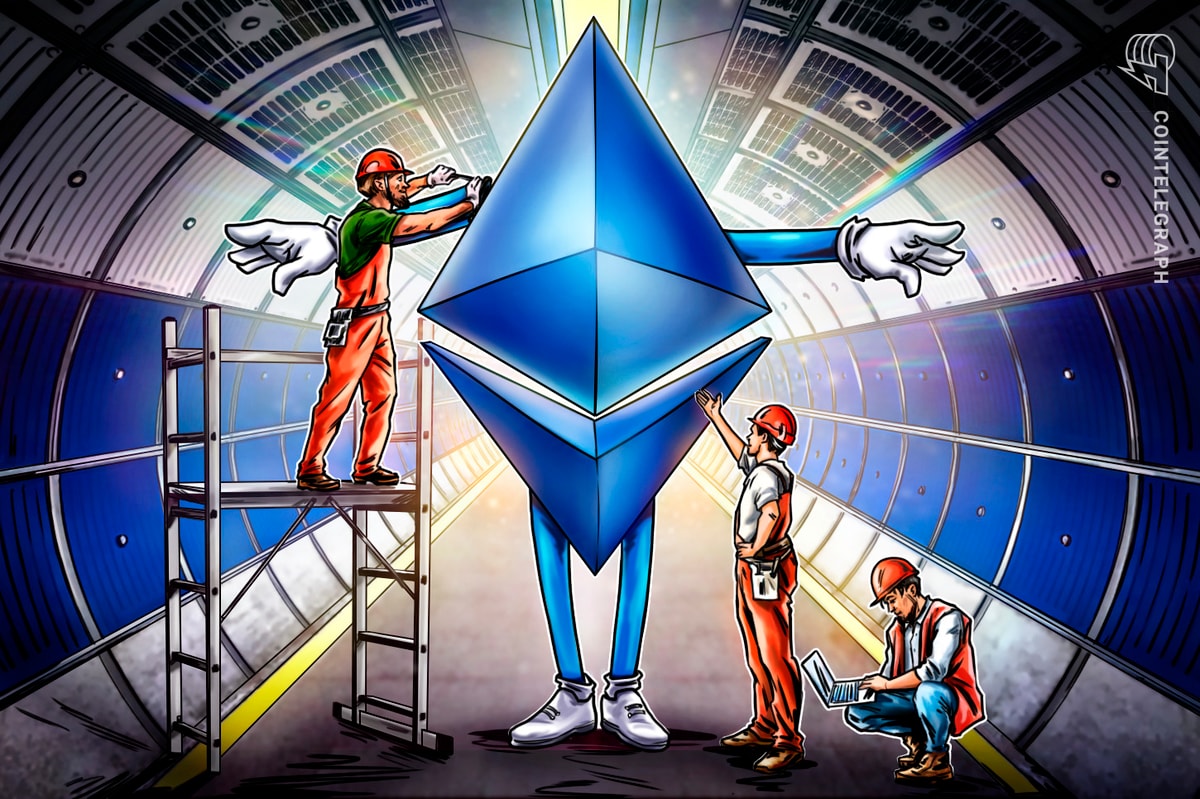The Ethereum ecosystem will continue its ongoing metamorphosis as the highly anticipated Shanghai upgrade draws near. The latest preeminent smart cont

The Ethereum ecosystem will continue its ongoing metamorphosis as the highly anticipated Shanghai upgrade draws near. The latest preeminent smart contract blockchain protocol improvement will activate Ether (ETH) withdrawals from Ethereum’s Beacon Chain.
The Merge marked a significant milestone for the Ethereum network in 2022, with the blockchain platform shifting from proof-of-work to proof-of-stake consensus. That change introduced validators as the new “miners” of the network, with staking ETH becoming a key component in maintaining the network.
While full validators were required to stake 32 ETH to process transactions and add new blocks to the network, the broader ecosystem could stake smaller amounts of ETH to earn a share of rewards — much like an investor that puts capital into interest-bearing accounts.
Those that locked up ETH to become validators have been unable to withdraw their staked holdings from the Beacon Chain. This changes with the Shanghai upgrade, and is a major reason for the increased fanfare around the latest change to the Ethereum network.
The Shanghai upgrade features a handful of Ethereum Improvement Proposals (EIPs) in addition to activating staking withdrawals. Cointelegraph reached out to members of the ConsenSys team, the Ethereum Foundation and analytics firm Nansen to unpack all aspects of the upcoming milestone.
Capella x Shanghai = Shapella
The upcoming changes feature two simultaneous upgrades amalgamated to encompass all facets of the upgrade.
Shanghai refers to changes to Ethereum’s execution layer, mainly enabling staked ETH to be deposited to execution layer wallets. The Shanghai upgrade requires a simultaneous change to the Beacon Chain, which has been dubbed Capella.
Justin Florentine, a staff protocol engineer for ConsenSys’ Hyperledger-Besu, further explained the combined upgrades at the execution and consensus layers:
“It is doubly named because it is the first simultaneous upgrade of Ethereum’s execution layer and consensus layer, and is highly anticipated because it will enable staked ETH withdrawals.”
Within the Ethereum ecosystem, execution layer upgrades are named after cities that have hosted Devcon events, while consensus layer upgrades are named after stars. Therefore the upcoming upgrade’s technical name is Shapella, combining Shanghai and Capella.
Nevertheless, given the focus on activating staked ETH withdrawals, the wider cryptocurrency ecosystem refers to the looming upgrade as Shanghai. As Beiko explained, Shanghai closes an important chapter in Ethereum’s evolution:
“It’s better to think of Shanghai as ‘finishing the Merge’ than related to future upgrades. We didn’t introduce withdrawals during the Merge because that upgrade was already the most complex in Ethereum’s history.”
Shanghai in a nutshell
As has been highlighted by several analysts and Ethereum developers, Shanghai features five EIPs. EIP-4895 will enable users to withdraw from the Ethereum staking contract, which had previously been locked.
Reward payments will be sent automatically to withdrawal addresses at regular intervals to validators. Users also have the option to exit staking entirely, which will return their entire validator balance.
Ethereum’s Shanghai upgrade will unlock 17.6M ETH or over $28 billion. https://t.co/qt8K4Zn55y
— Cointelegraph (@Cointelegraph) March 2, 2023
Validator balances are maxed out at 32 ETH, meaning that balances above this threshold as a result of rewards do not contribute to the principal amount nor increase the weight of a validator on the network.
EIP-3651, EIP-3855, EIP-3860 and EIP-6049 are the other four elements of the network upgrade. Matt Nelson, ConsenSys Hyperledger Besu and Web3 senior product manager, highlighted the impact of each of these EIPs.
The Ethereum protocol prices gas based on how many units of work a function will require of a computer in the network. Changes to Ethereum’s gas costs often adjust to correct overpriced or underpriced operations that have central processing units doing more or less work than anticipated. Warm coinbase (3651), PUSH0 (3855) and the initcode changes (3860) are part of these corrections, according to Nelson.
EIP-3651 changes the price of accessing the coinbase address of a validator that submits and executes transactions. Validators receive fees to their coinbase address for maintaining the network. As Nelson summed up, EIP-3651 looks to lower the gas cost of accessing a coinbase address so that users that submit transactions can pay the validators directly in specific conditions:
“Regardless, this EIP corrects a previous oversight on the cost to access the coinbase address and gives some added benefits to users and developers that open up new use-cases.”
EIP-3860 will have a similar effect. Developers submit initcode to the network when deploying a new smart contract. When the initcode is executed, a smart contract “bytecode” is created on-chain and runs each…
cointelegraph.com
